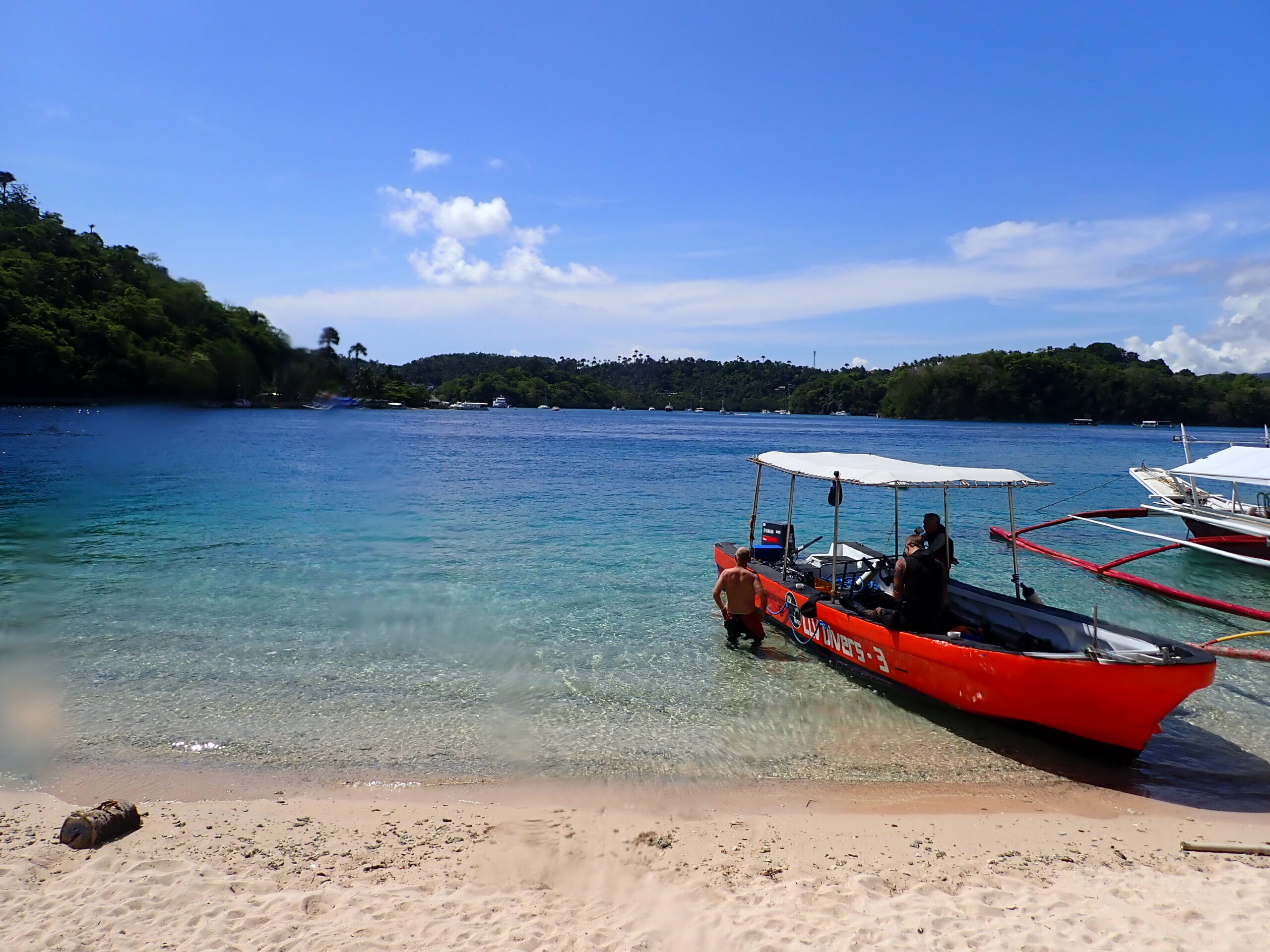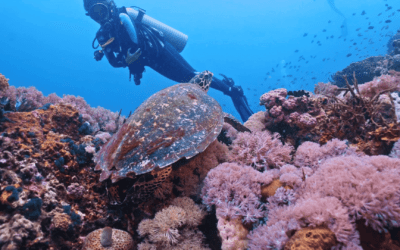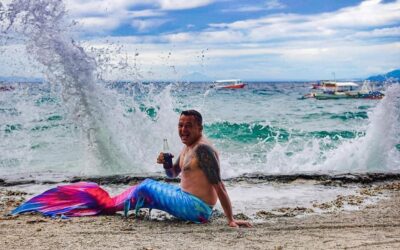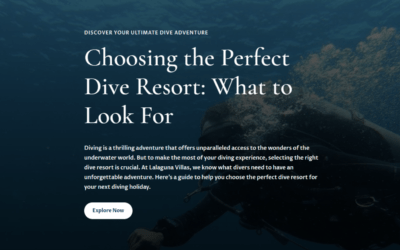Down to the dive site: Giant Clams
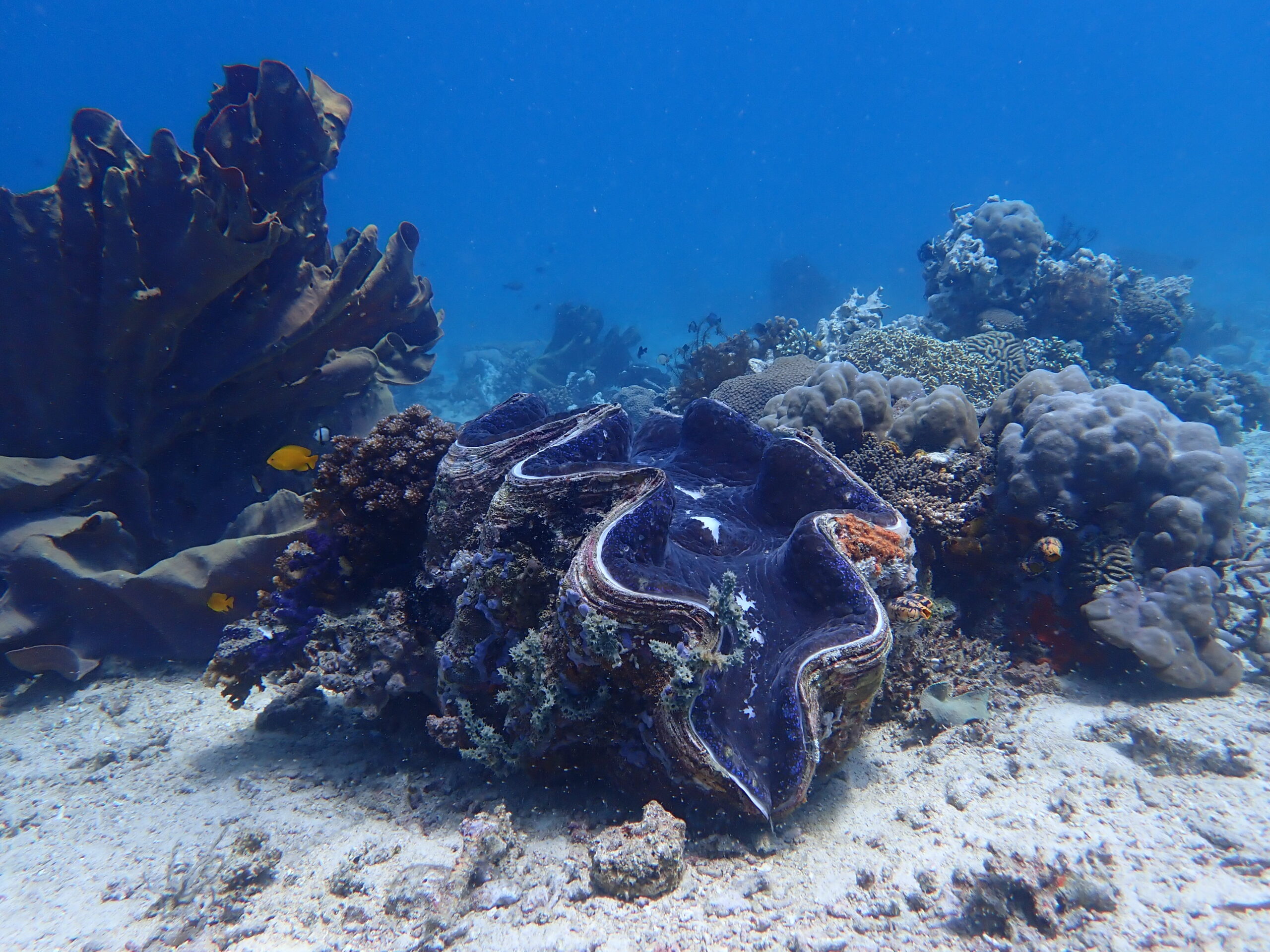
Dive site name: Giant Clams
Dive type: muck dive, photography dive
Depth: 6 – 15m
Viz: upto 20m in good conditions
Skill level: beginner and up
Getting there: six minutes by boat
Come and meet the largest bivalve mollusk on the planet: Tridacna gigas, the giant clam. Growing up to four feet across and weighing over 400lbs (that’s over 130cm and more than 180kg), giant clams were once at risk of extinction in the wild but now thanks to protections enacted by the Philippines government and local authorities here in Puerto Galera, the population nationwide has sprung back to more than 70,000.
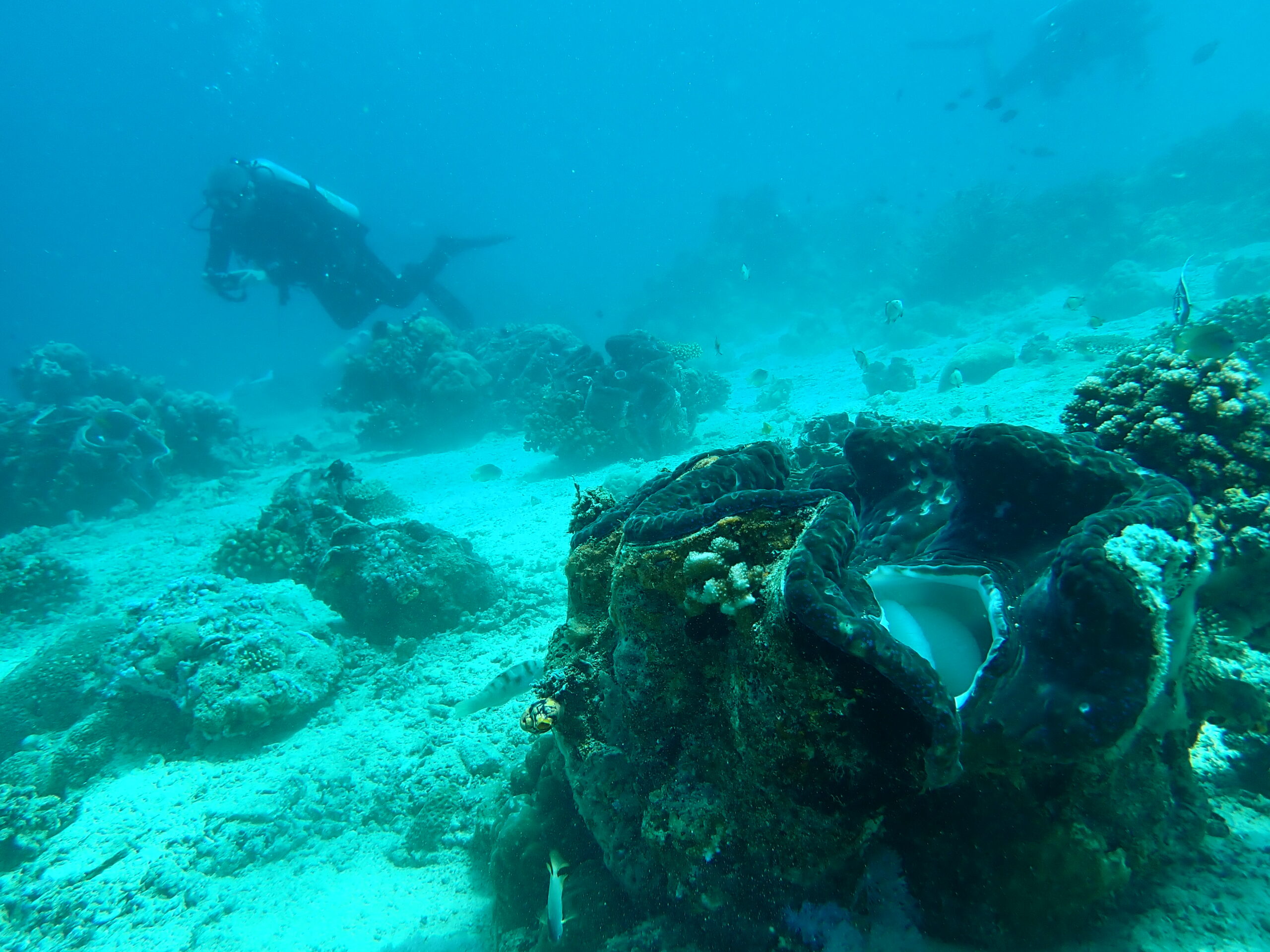
These extraordinary creatures take many years to reach full maturity and the clams in this bay may be over 100 years old.
Giant clams have hundred of photo-sensitive cells, which function like eyes, along the outer extremities of their mantle (the soft fleshy part of the animal immediately inside the shell). They are sensitive to green, blue, and ultraviolet light, which enables them to position themselves open towards the sun to maximise photosynthesis.
They can filter-feed using their gills to extract plankton from the water, but most of their nutrients come from the colourful zooxanthellae algae with which they have a symbiotic relationship. The clam parts its shells and exposes its mantle tissue so that the algae can receive sunlight needed for photosynthesis, through which the algae deliver food into the tissue of the clam.
The dive down to Giant Clams is perfect for beginners as the molluscs themselves are found just 6m below sea level – indeed the site is a popular snorkelling and freediving spot for this reason – and the currents inside the bay tend to remain gentle except during the strongest tides.
After getting to know the clams, the dive descends down to a sandy bottom interspersed with small coral reefs. The keen-eyed diver will spot hairy frogfish and a dozen different species of nudibranches, as well as flamboyant cuttlefish and mimic octopus.
Definitely a dive to bring your camera for!
(Since the dive site is near other popular spots including Montani and Secret Garden, the LLV boat has been known head out for a double dive and moor up on the sandty shores of San Antonio island during our surface interval… as you can see, the views above water are just as breathtaking as what’s to be seen below!)
